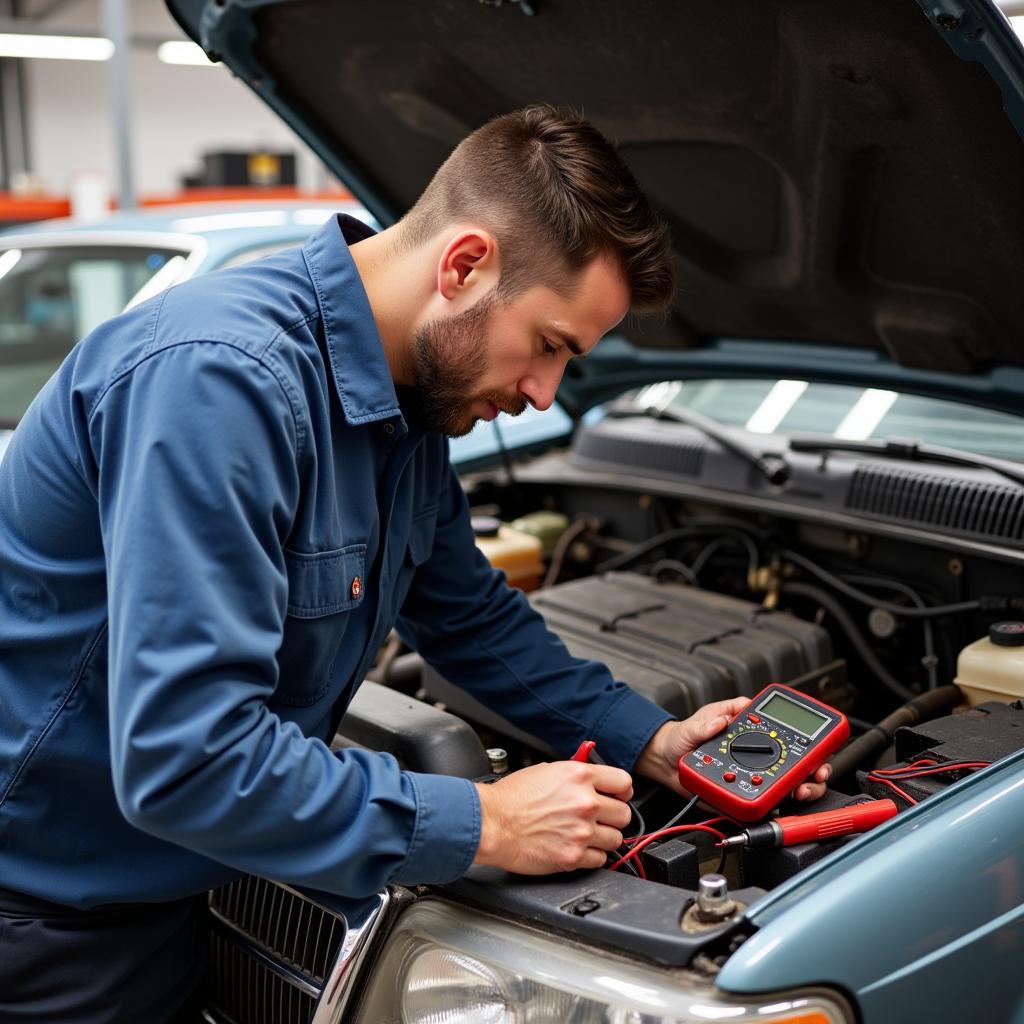Ambassador Car Maintenance is crucial for ensuring the longevity and reliability of this iconic vehicle. Regular upkeep not only prevents costly repairs down the road but also enhances safety and maintains the car’s classic appeal. This guide provides a detailed approach to Ambassador car maintenance, covering everything from routine checks to troubleshooting common issues.
Why is Ambassador Car Maintenance So Important?
Regular Ambassador car maintenance is like giving your classic car a health check-up. It helps identify potential problems early on, preventing them from developing into major and expensive headaches. Consistent maintenance also ensures the car performs at its best, delivering a smooth and enjoyable driving experience. Furthermore, well-maintained Ambassadors retain their value better, making them a wise investment for classic car enthusiasts.
Routine Checks for Your Ambassador
- Oil Changes: Regular oil changes, every 3,000-5,000 miles, are essential for lubricating the engine and preventing wear and tear. Use the recommended oil grade for optimal performance.
- Fluid Levels: Check all fluid levels, including coolant, brake fluid, power steering fluid, and transmission fluid, regularly. Top them off as needed to ensure the smooth operation of various systems.
- Tire Pressure: Maintain correct tire pressure for optimal fuel efficiency, handling, and tire life. Check the pressure at least once a month and before long trips.
- Battery: Inspect the battery terminals for corrosion and clean them periodically. A weak battery can lead to starting problems and other electrical issues.
- Lights: Check all lights, including headlights, taillights, brake lights, and turn signals, regularly. Replace any burnt-out bulbs promptly for safety.
 Ambassador Car Routine Checks: Oil, Fluids, Tires, Battery, Lights
Ambassador Car Routine Checks: Oil, Fluids, Tires, Battery, Lights
Troubleshooting Common Ambassador Car Issues
Ambassador cars, like any other vehicle, can experience certain problems over time. Here’s a guide to troubleshooting some common issues:
Dealing with Starting Problems
- Check the battery: A weak or dead battery is often the culprit behind starting problems. Try jump-starting the car or replacing the battery if necessary.
- Inspect the starter motor: If the battery is fine, the starter motor could be faulty. Listen for a clicking sound when turning the key, which indicates a starter problem.
- Examine the ignition system: Issues with the ignition coil, distributor, or spark plugs can also prevent the car from starting.
Addressing Overheating
- Check the coolant level: Low coolant levels are a primary cause of overheating. Ensure the coolant is topped off and there are no leaks in the cooling system.
- Inspect the radiator: A clogged or damaged radiator can hinder heat dissipation. Clean the radiator fins and check for leaks.
- Examine the thermostat: A faulty thermostat can prevent the coolant from circulating properly, leading to overheating.
 Ambassador Car Troubleshooting: Starting and Overheating Issues
Ambassador Car Troubleshooting: Starting and Overheating Issues
Ambassador Car Maintenance: A Long-Term Investment
Investing time and effort in Ambassador car maintenance is a long-term investment that pays off in numerous ways. By following a regular maintenance schedule and addressing issues promptly, you can keep your Ambassador running smoothly for years to come.
Maintaining the Classic Appeal of Your Ambassador
Regular cleaning and waxing protect the paintwork and preserve the car’s classic appeal. Keeping the interior clean and well-maintained adds to the overall aesthetic and enhances the driving experience.
Conclusion
Ambassador car maintenance is a continuous process that requires dedication and attention to detail. By following the guidelines in this comprehensive guide, you can keep your Ambassador in top condition, ensuring its reliability and preserving its iconic status. Remember, regular Ambassador car maintenance isn’t just about keeping the car running, it’s about cherishing a piece of automotive history. Need expert advice? Connect with us at AutoTipPro at +1 (641) 206-8880 or visit our office at 500 N St Mary’s St, San Antonio, TX 78205, United States.






Leave a Reply